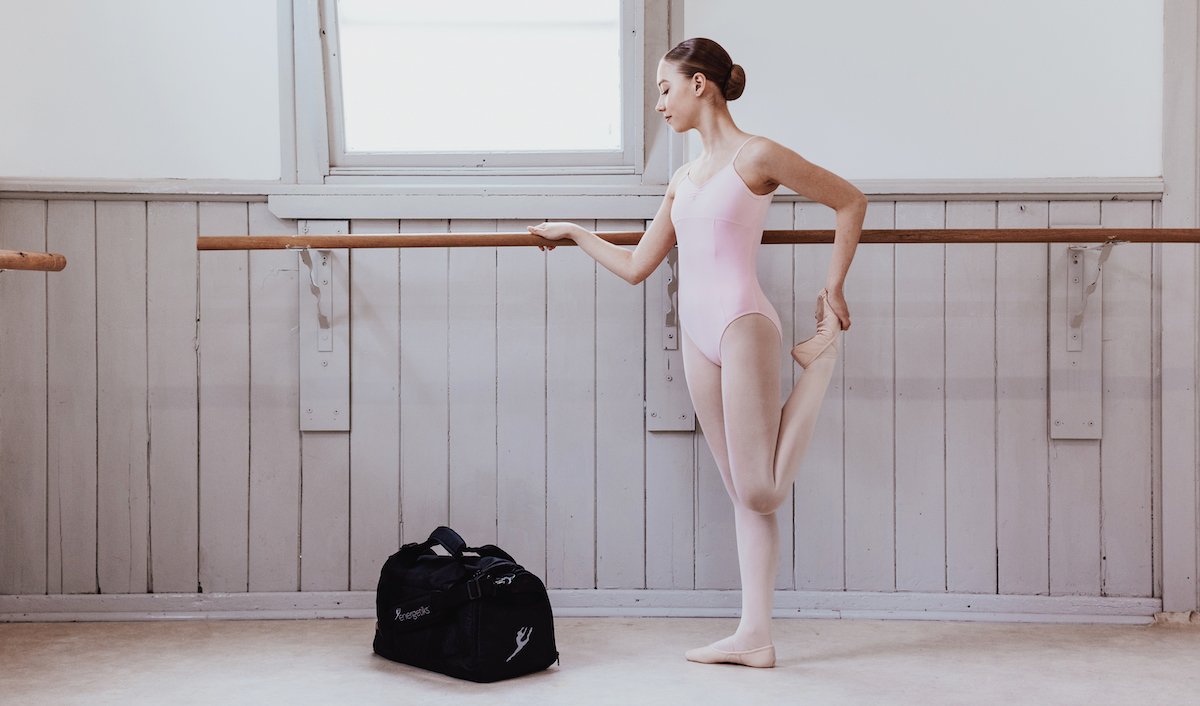Dance Advice | Stretching versus Over-Stretching
We all dream of having long, never-ending extensions. To développé our leg and have it reach the side of our head, or slide easily into the splits without a second thought. While having beautiful lines and flexible tricks is something we all aspire towards, the ability to emulate and create these shapes isn’t the same for everybody. Our genetic makeup determines how much flexibility we have, along with the types of exercises and stretches we are doing. We can always improve our flexibility but there needs to be caution as to when stretching becomes more of a hinderance rather than an aid. While we may see some dancers achieving lines with their bodies that look somewhat supernatural, it doesn’t mean we can all perform those shapes, and if attempted unsafely may cause injury. Being aware of your individual determinants of flexibility, warm-ups and cool-downs, and the difference between safe stretching and over-stretching will all contribute towards improving your flexibility and range of motion. To help you decipher the difference between stretching and over-stretching we’ve outlined some points to consider below.
Everyone’s individual flexibility varies and is influenced by a variety of elements - collagen makeup, past injuries, and overall bodily awareness. When we talk about flexibility, it’s the available length a tissue has and can be moved into. There are several factors that contribute to and determine an individuals flexibility. These include:
The length of the muscle - how far is the range of contraction, relaxation, and stretch of the muscle body.
The connective tissue tension - our tendons can somewhat stretch but our fascia and ligaments cannot.
The shape of the joint - the shape of our bones and how they fit together at the joint plays a large factor into how mobile and flexible we can be. This is determined by our anatomy and genetics.
The nervous system response - includes the receptors in our joints, muscles, and tendons. They relay information about how much these tissues are stretching and how our body is reacting.
Activity level - how much we use our muscles can influence their flexibility. Using them a lot can make them tight, particularly if there isn’t a lot of stretching and cooling down after using them.
Age - our level of flexibility will diminish with age. As we age, our muscles and joints become stiffer and less flexible due to a loss of collagen. Having an inactive lifestyle and not stretching regularly throughout your life can also accelerate inflexibility.
Gender - generally women tend to be more flexible than men. This is due to the structure and amount of connective tissue and elastin women have compared to men.
Maya wears the Veronica Camisole in Mint
Stretching is one of the best ways to improve your flexibility and range of motion. It promotes circulation and keeps the joints and muscles flexible, allowing the body to remain supple and vibrant. When your fascia is feeling supple and hydrated, it gives you a sense of spaciousness and connectedness to your body as the nerves in the fascia can optimally communicate with our brain. The connective tissue in your body is also partly responsible for your proprioception, your body’s sense of where it is in space and how it relates to itself. Feeling a slight pull in the muscle in a way that’s not totally comfortable is a positive thing - it means you’re working to increase your flexibility. A productive strength should feel slightly uncomfortable but any stabbing or sharp pain is a no-go.
While stretching can alleviate compression and improve flexibility, over-stretching can be counter productive and actually lead to stiffness. Over-stretching happens when you stretch your muscles beyond their capacity in terms of flexibility and range of motion. It means the length of the tissue is greater than ones ability to control said length. It can also infer that a muscle is stretched past its point of natural elasticity and healthy tissue length. This can often happen in those with hyper-mobile joints as they have really loose ligaments which allow the joint to move further than it needs to.
Within the muscle belly lies ‘spindles’ which are sensory receptors that pick up the speed and intensity of a stretch. If a stretch is too fast or too intense, the spindles trigger a reflex arc to the spinal cord and back to the muscles to contract in order to avoid tearing muscle fibres. We want to stretch further but our spindles intercede to protect us, resulting in stretching with a feeling of stiffness and resistance, locked into a contraction and going nowhere. To keep the muscle spindles at bay, think of lengthening into softness and maintain that length over time. This will allow the spindles to habituate to the new length and fire less frequently.
Over-stretching can also cause ligament damage. Ligaments are designed to support each joint and can get more and more relaxed from excessive stretching. If over-stretching continues it can cause internal shifting of the joint surfaces against each other. By decreasing the integrity of the ligaments, it can also cause wear and tear on cartilage leading to joint pain and degeneration.
There’s a fine line between challenging our muscles in order to increase our flexibility and hurting ourselves. Not warming up prior to stretching is the primary reason strains and pulls occur. Warming up consists of the inclusion of dynamic movements that will encourage the circulation of blood around the body and increase the range of motion. Once the body is warm, we can progress into static stretching and proprioceptive neuromuscular facilitation (PNF) - stretching that contracts and holds a targeted muscle in a stretched position. To learn more about the importance of warming up, have a look at our other article here.
Maya wears the Natalia Camisole in Candy
To improve flexibility and avoid over-stretching, here are some of our top tips -
When stretching, if you feel any sort of pain, slowly ease out of the stretch.
Practice your stretches consistently. Regular stretching will improve and increase your flexibility.
Hold a stretch for as long as you feel comfortable. From five breaths to a couple of minutes, do what feels best for you.
Give your body the opportunity to rest. You may have had a great day of stretching yesterday and your muscles may not be up to the task today.
Remember to breathe deeply and slowly as you stretch. This helps to relax the muscles, promotes blood flow and increases the delivery of oxygen and nutrients to the muscles.
Stretch before you go to bed. This works at a neuromuscular level, as the increased muscle length is the last thing your nervous system remembers before going to sleep. Sleep, is also the time when your muscles and soft tissues heal, meaning your muscles are healing in an elongated, stretched position.
Teah wears the Addison Crop Top & Sabre Tight in Navy
If performed correctly, stretching is one of the simplest forms of body maintenance that almost anyone can do. It can improve your flexibility as well as your general range of motion. Stretching should always be done safely and within the muscles limitations. Take your time and ease into it. Remember, challenging the muscle is good but not to the point of pain!
Article by Sheree Ronai-Horvath
Photography by Elly Ford








